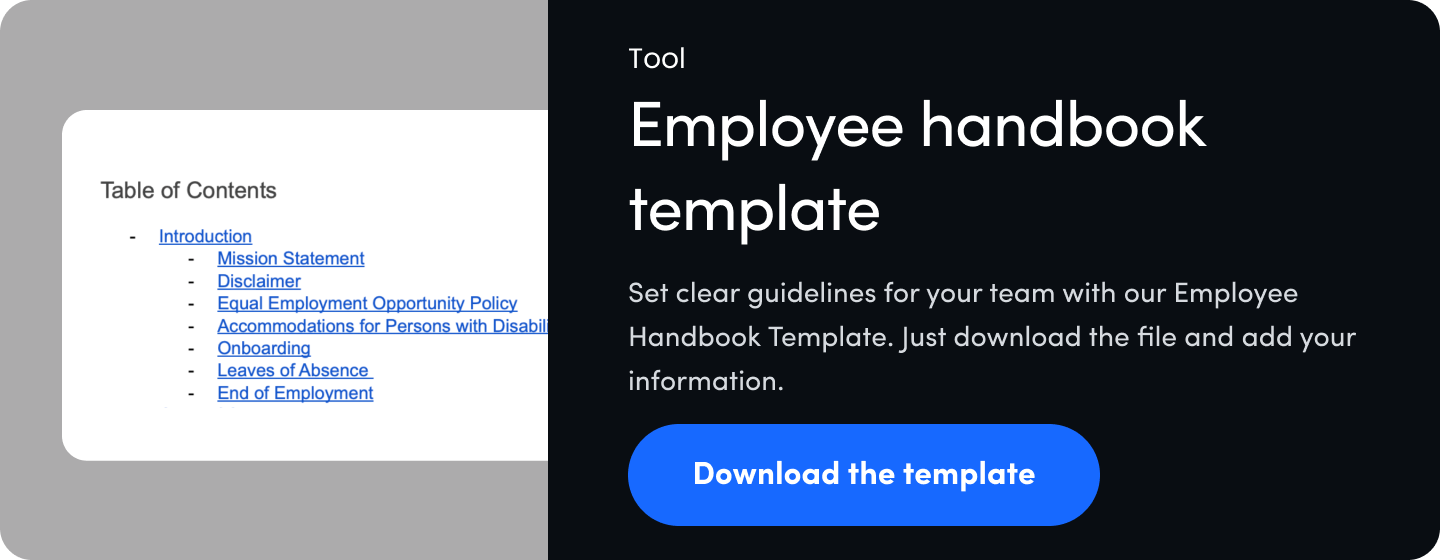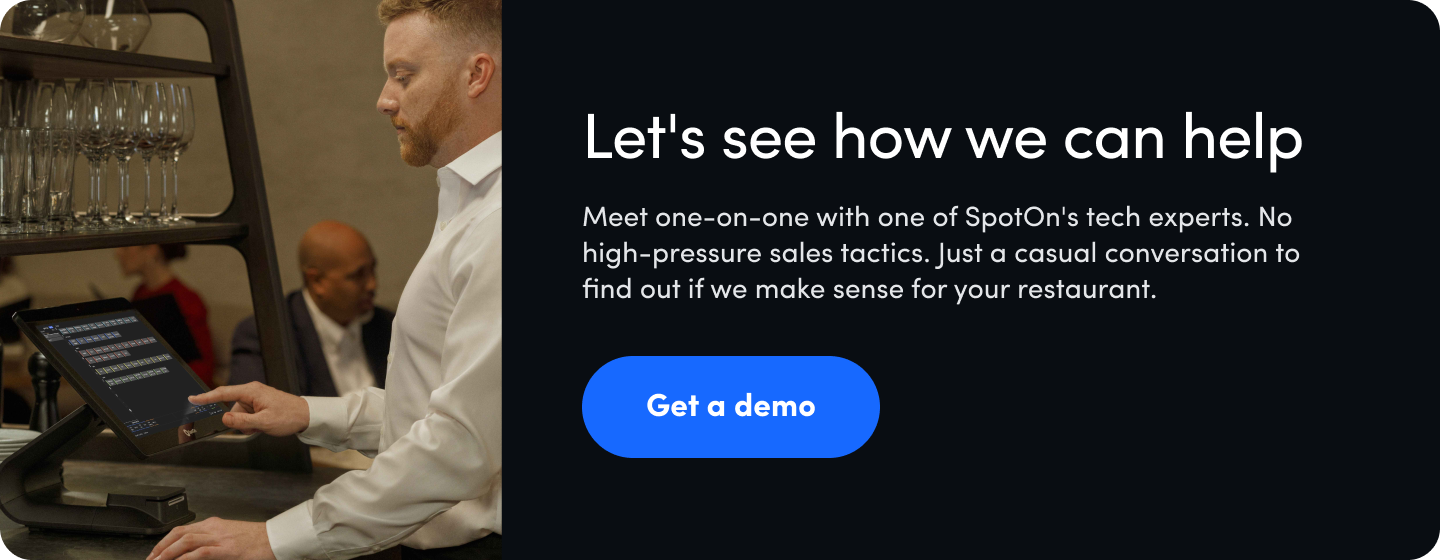You can’t run a business alone—nor would you want to. Any seasoned restaurant owner knows a great team is crucial to smooth operations and outstanding guest experiences. Plus, working alongside people you like and respect makes the long hours and busy weekends more enjoyable, even when there are places you’d rather be.

Finding good staff members can feel like searching for a needle in a haystack, especially in an unpredictable labor market. When you do find someone who’s a good fit, you want to keep them around for the long haul.
Excellent service doesn't grow on trees. Retaining your employees doesn’t just save you time reviewing applications, interviewing, and training but also money. Hiring a staff member costs almost $6,000 per month on average. Creating a supportive, professional employee experience and positive workplace culture is key for any business looking to increase retention and save on hiring costs.
A lot goes into a fantastic employee experience—including many factors outside of your control (looking at you, unruly guests). Cultivating a positive workplace culture means fair employee compensation, clear guidelines around job duties, and flexible shift scheduling. Employee meals don't hurt either.
Thankfully, there are tools to help you manage and retain employees by communicating clear expectations for employee conduct and restaurant processes. While there’s always a learning curve when you start a new job, having a clear reference point can help shorten the onboarding period and help new employees hit the ground running.
Picture this: you just hired an awesome new server, and it’s her first day on the job. But just as she arrived for her first shift, your supplier delivered the wrong shipment, and you still need to update the menu with today’s specials. You’re juggling onboarding your new employee with the million other things you have to get done before guests walk in. Enter the restaurant employee handbook. It’s your second-in-command when it comes to helping new hires start strong. Here’s why.
1. It helps new staff feel comfortable
The first day at a new job can make you feel like a kid on the first day of school. Excited, wondering if you’ll make friends, scared you’ll mess something up, or not know the answer to an important question. Think of the employee handbook as a cheat sheet that answers some of those important questions.
Training your staff is one of the many to-dos before opening a restaurant.
Sharing the employee handbook before your new employee’s first shift can help them dress appropriately with a dress code policy, get the necessary certifications, and comply with relevant safety protocols.
Especially if you're onboarding back-of-house employees, you'll want to include an employee handbook section on food safety rules, as well as other safety protocols, like personal hygiene. You don't want a work-related accident just because new employees don't understand your restaurant's policy.
The restaurant employee handbook is more than a welcome letter. It gives your new team members a reference point for when they aren’t sure how to void an order or access health insurance information. It not only helps employees feel more competent navigating their new workplace, an employee handbook frees restaurant owners from having to answer simple questions over and over again.

2. It sets clear expectations
39% of hourly employees report quitting a job due to poor communication with their employer. A thorough employee handbook outlines policies for sick leave, vacation time, compensation and employee benefits, overtime pay, scheduling, jury duty, and so much more. But it also outlines the more intangible parts of your business, like your core values and the restaurant's mission statement.
When your employees understand your restaurant's core values, they're better prepared to deliver a top-notch guest experience. Plus, they'll know how to treat fellow employees. The restaurant industry in particular, is known for murkier boundaries between professional and personal relationships. For example, romantic relationships between employees are not uncommon. You might want to outline your restaurant's policy on this issue in the staff handbook.
Include anti-harassment policies in your employee handbook so your employees know you have zero tolerance for negative workplace behavior or discrimination based on race, gender, sexual orientation, or any other category. You also might want to outline the complaint procedure if discrimination takes place. Does the general manager handle complaints? Is there an existing staff member who oversees employee relations?
When you're writing an anti-harassment and sexual harassment policy, be sure to hire a lawyer with employment law expertise so that your employee handbook complies with all the legal requirements necessary.
Creating a dress code section in the employee handbook is a great idea. Particularly if you run a fine dining restaurant, you might be stricter about what employees can and cannot wear to work.
A restaurant employee handbook can help you set clear guidelines when it comes to scheduling and communicating employee availability. You can give your restaurant employees advance notice of the team meeting schedule and ask them to download your employee scheduling app if you use restaurant scheduling software. This way, everyone will be on the same page when it comes to shift scheduling. It’s a clear and objective way to communicate what you expect from your employees and what they will receive in return.
3. It establishes company culture
A positive work environment is essential to employee retention. When people find a workplace challenging, rewarding, and fun, they tend to stick around. Including a brief history of your business, company mission statement, and restaurant's core values in the employee handbook sets the tone for new employees and shows your commitment to making your restaurant a great place to work.

Creating a fun yet challenging work environment is essential for staff retention.
People work to get paid. But that doesn't mean you can't also provide employees with a place where they can laugh, feel challenged, and grow during work hours. An employee handbook can help your management team get on the same page regarding the employment relationship.
It should be a living document that reflects the restaurant's commitment to creating a great workplace. Employee handbooks show priorities. If your restaurant's priorities change, it should be reflected in the restaurant handbook. Incorporate employee feedback when you're outlining employee conduct and core values. It can be tough to write a "how-to guide" on workplace culture, but general guidelines are all you need to set the right tone. It's not always about
4. It provides a framework if and when you need to let an employee go
Ending a staff member’s employment is an unfortunate reality of restaurant management. It doesn’t necessarily get easier, but there are steps you can take to make sure you are treating your former employee is treated fairly and with respect.
In your employee handbook, you can detail a code of conduct and the ramifications for employees should they break these rules. This sets a standard for all employees’ behavior and ensures no one gets special treatment. You can also outline the process for termination so everyone knows what to expect when it comes to timeline and communication.
An employee handbook can also provide restaurant employee rules for communicating resignation. Note your employment policies and how much advance notice you need in the case of employee resignation.
5. It creates a professional work experience
Establishing processes and guidelines for employee onboarding and everyday tasks makes staff turnover less painful and can help increase efficiency. A restaurant employee handbook lets your team know the same rules apply to everyone, and you’re not just making things up as you go along.
Putting information regarding employee benefits and employee compensation in your restaurant employee handbook can increase transparency, showing that you take labor laws seriously. The U.S. Equal Employment Opportunity Commission and Fair Labor Standards Act, as well as local laws around rest periods and what restaurants pay employees, create guidelines on everything from discrimination to posting notice of the minimum wage.
Written guidelines are especially important for communicating disciplinary procedures, vacation time, employee rights, and other employment policies. If a server comes in to work with a dress code infraction, what's the protocol? You don't want your employees thinking you're making up dress code rules on the fly or unequally meting out the disciplinary action, either.
Plus, a restaurant employee handbook gives your employees answers to certain questions when you’re out of town or otherwise occupied. Whether the shift manager has a quick question on employee meals or one of your line cooks has an issue with direct deposit, they'll know (from staff training) to consult the employee handbook before getting in touch.
Start with a restaurant employee handbook template
One of the biggest hurdles to creating a restaurant employee handbook is the daunting task of writing pages upon pages from scratch. While some sections of your employee handbook are going to be specific to your restaurant, like your mission statement, starting with a generic restaurant employee handbook template can be a big time saver.

When writing sections that might be regulated by local or federal law, be sure to consult a lawyer. Don't DIY this section. You don't want to provide your managers and other employees with incorrect information during staff training.
Keep your employee handbook updated
While a thorough restaurant employee handbook can take some time and effort, if the outcome is a supportive, empowering workplace, it will be worth it. While many sections require an attorney to ensure compliance with local, state, and federal laws, it’s important to remember the employee handbook is not a legal contract but a living guide for your restaurant’s policies. Keeping your handbook as detailed and up-to-date as possible will help new employees get the hang of things more quickly and take some of the guesswork out of the onboarding period. It's a little work now with a big payoff later.













